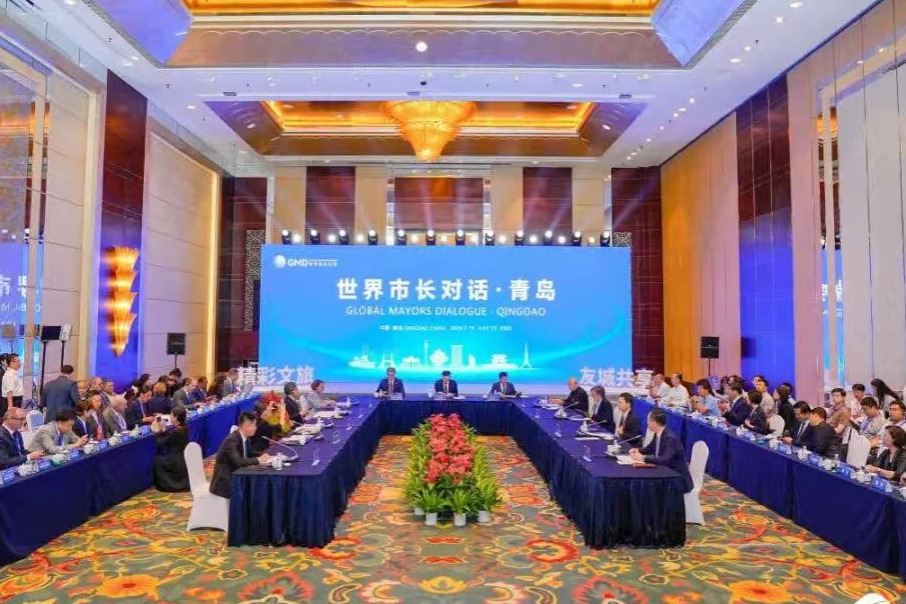America's perspective on China has been mistaken


The complex China-US relationship sits at a historic inflection point. As strategic rivalry intensifies, voices across the world are questioning long-held assumptions underpinning Washington's hawkish turn against Beijing. On August 11th, Bloomberg's chief economist Tom Orlik argued that America's perspective on China has been profoundly mistaken. Current policies rooted in notions of containment rest on a flawed understanding of China's true ambitions. By pursuing cooperation in spheres of mutual interest, ties could regain a constructive trajectory.
Orlik contends the view of China as a threat to US hegemony is misguided. America has rallied partners to restrict China's rise, fearing its development model as a challenge to the liberal world order. But in reality, China's goal is recovering its historic status as a leading power, not supplanting American dominance. Its ideology and domestic policies do not inherently undermine America's global standing. In fact, China's growth creates openings for win-win collaboration.
A key misperception is conflating China with the Soviet Union. Whereas the Soviets sought to export communist revolution, China aims primarily to lift its population out of poverty. Two systems can coexist peacefully without inevitable confrontation. America must abandon the 'Cold War mentality' of containment and accept China's resurgence as legitimate. Progress requires nuance, not shoehorning China into Western norms.
Economically, the US underestimates China's resilience against technology and trade restrictions. Its vast domestic market can sustain high growth rates even while decoupling from the West. Attempts to stifle China's rise will only fracture supply chains and harm American consumers. Washington must reorient its zero-sum economic paradigm to accommodate China's rightful place in the global economy.
Orlik advises recalibrating ties based on shared interests. On climate, health and nuclear issues, China and the US have convergent priorities. But in its zeal to outcompete China, Washington disregards overlapping goals. Diplomatic coordination on pressing regional crises can also unlock quiet progress out of the spotlight. America must recognize where mutual interests align and build goodwill through pragmatic cooperation.
For progress, blind antagonism must give way to nuance and communication. America cannot impose its worldview on China. But channels exist for positive-sum engagement if Washington abandons coercive policies. Orlik suggests leaders survey ties with fresh eyes, untethered from ideological biases that see conflict as inevitable. Therein lies hope of forging a constructive modus vivendi.
Significantly, Orlik's views reflect currents within America's policy circles questioning the combative stance against Beijing. As a Western economist breaking from the consensus narrative, his insights deserve our attention. They lend credence to China's perspective and could be referenced to realign ties.
Of course, realism is needed. Structural tensions rooted in distrust and power asymmetry will persist. But Orlik's call of retuning relations away from antagonism and towards cooperation signals room for optimism. And as domestic attitudes evolve, political possibilities expand. With skillful diplomacy and messaging, both Beijing and Washington could foster a climate where stabilizing relations becomes thinkable.
Some in Washington already argue China ties need not be a zero-sum game. Avoiding Thucydides's trap requires political courage to break old paradigms, but brings ample rewards. Handled deftly, this moment of turbulence can illuminate a path forward built on mutual respect for two great civilizations. Therein lies the kernel of a constructive relationship: not inevitable conflict between rival systems, but peaceful coexistence between equals in a multipolar world.
In conclusion, Orlik's perspective provides a window into emerging fissures within America's China narrative. As Washington's policies reach their limits, more voices are questioning the logic of containment. We must actively promote alternate framings centered on engagement, not antagonism. While challenges persist, by channeling these winds of change, we could gently steer relations towards calmer seas.
The author is a Beijing-based commentator. The views don't necessarily reflect those of China Daily.
If you have a specific expertise, or would like to share your thought about our stories, then send us your writings at opinion@chinadaily.com.cn or comment@chinadaily.com.cn.


































